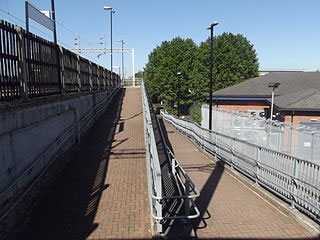
Source: Stop Watch,klaasvangend, Open Clip Art Library
In this activity, you will calculate your lab partner's power required to walk and run up a flight of stairs. You will measure the time it takes for your partner to run up a flight of stairs. As your partner runs, they do work by moving their mass against gravity. If you know the vertical distance your partner travels on the flight of stairs, you can calculate the work done in running up the stairs. The power your partner requires to do this depends on the time it takes her to run up the flight of stairs. More time means less power generated. Less time means more power generated. The work done stays the same in each trial since the force (weight) stays the same as does the distance up the stairs.
Mass of your lab partner = 53.5 kg.
The flight of stairs has 22 steps including the landing. Each step is 19 cm (vertical).
Now, click on the table below to check the time entries.

Source: Stop Watch,klaasvangend, Open Clip Art Library
Trial |
Time (seconds) |
1 |
|
2 |
|
3 |
Now make a table like this in your notes. Fill in the empty cells with the appropriate values. Click the hint button if you need help.
Hint 1 Hint 2
Hint 2 Hint 3
Hint 3 Hint 4
Hint 4 Hint 5
Hint 5
| Name of Student | Mass of Student | Force Newtons m x g |
Vertical
distance meter |
Work Joule(Nm) F x d |
Time Seconds t |
Power Watt(J/s) Work/time |
Power (Horsepower) |
| Susan Trial 1 |
53.5kg | 525 N | 4.2m | 2200 J | 12s | 180 W | 0.24 hp |
| Susan Trial 2 |
53.5kg | 525 N | 4.2m | 2200 J | 7s | 310 W | 0.42 hp |
| Susan Trial 3 |
53.5kg | 525 N | 4.2m | 2200 J | 4s | 550 W | 0.74 hp |

Use your own personal data to calculate the power you would generate in the lab activity. Use a stopwatch to get time, and use your weight in Newtons as the force (1 lb. = 4.45 N). Remember to use the information above for the height of the stairs and the timetable.
| Name of Student | Your Mass |
Force Newtons m x g |
Vertical distance meter |
Work Joule(Nm) F x d |
Time Seconds t |
Power Watt(J/s) Work/time |
Power (Horsepower) |
| Your name Trial 1 |
|||||||
| Your name Trial 2 |
|||||||
| Your name Trial 3 |

Source: Witton Station – ramp, Magnus Manske, Wikimedia Commons
Using your mass (weight in Newtons ÷ 9.8) from scenario 2, calculate the power to climb a ramp to a height of 10 meters above the starting point. Suppose it takes you 20 seconds to climb the ramp.